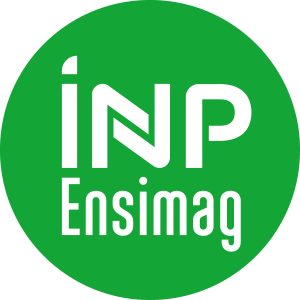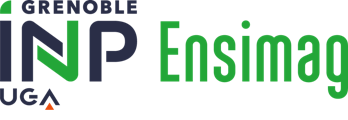Grenoble, a leading centre for technological innovation
At Grenoble INP - Ensimag, UGA, our faculty members are also researchers in nationally and internationally recognised laboratories. Associated with the CNRS, Inria, and Université Grenoble Alpes, these laboratories are central to the city’s reputation for scientific excellence, making it France's leading centre for computer science research.
The research conducted by Ensimag’s research professors takes place in nine laboratories shared by Université Grenoble Alpes and other research organisations (CNRS, INRIA, CEA, MIAI). Their research ranges from the use of psychology in the design of human-system interfaces to the theory of new modes of computation that will not be implemented for another twenty years. These laboratories are at the heart of the city’s reputation for scientific excellence.
Laboratories
- GIPSA-Lab
-
GIPSA-lab is a joint research laboratory of the CNRS, Grenoble-INP and Grenoble Alpes University; the laboratory is also under agreement with Inria and Observatoire des Sciences de l'Univers de Grenoble.
At GIPSA-lab, we develop theoretical and applied researches on CONTROL, SIGNAL and IMAGES PROCESSING, SPEECH, COGNITION, ROBOTICS and ARTIFICAL INTELLIGENCE.
Multidisciplinary and at the interface between the human, physical and digital worlds, our research is confronted with measurements, data and observations from physical, physiological and cognitive systems. It focuses on the design of methodologies and algorithms for processing and extracting information, decisions, actions and communications that are viable, efficient and compatible with physical and human reality. Our work is based on mathematical and computational theories for the development of models and algorithms, validated by hardware and software implementations.
By relying on its platforms and partnerships, GIPSA-lab maintains a constant link with applications in a wide range of fields: health, environment, energy, geophysics, embedded systems, mechatronics, industrial processes and systems, telecommunications, networks, transportation and vehicles, security and operational safety, human-computer interaction, linguistic engineering, physiology and biomechanics...
Due to the nature of its research, GIPSA-lab is in direct and constant contact with the economic environment and society.
Its potential of teacher-researchers and researchers is invested in training at the level of the universities and engineering schools of the Grenoble site (Université Grenoble Alpes).
GIPSA-Lab Website - LIG: Computer Science Laboratory of Grenoble
-
500 members of LIG: faculty, full-time researchers, PhD students, administrative and technical staff. They are distributed over three sites in Grenoble and its suburbs: the Saint Martin d'Hères Campus, Minatec, and the Montbonnot Campus.
The mission of LIG is to contribute to the development of fundamental aspects of Computer Science (models, languages, methodologies, algorithms) and address conceptual, technological, and societal challenges.
Increasing diversity and dynamism of data, services, interaction devices, and use cases influence the evolution of software and systems so they need to guarantee the essential properties such as reliability, performance, autonomy, and adaptability. Addressing such challenges is the objective of 22 research teams organized into 5 focus areas.
LIG focuses on the fundamentals of Computer Science and experimental developments while taking into account new societal challenges.
LIG Website - LJK: Jean Kuntzmann laboratory
-
The Jean Kuntzmann laboratory employs over 250 people and is made up of three scientific departments, the latter comprising seventeen research teams.
- The Geometry-Image department brings together researchers working in Geometric Modeling, Image Analysis, Computer Graphics and Computer Vision.
- The DATA department develops research in probability, statistics, machine learning, optimization, financial mathematics and signal and image processing.
- The AMAC (Algorithms, Models, Analysis and Computation) department brings together researchers who develop tools for modeling and numerical and symbolic computation.
LJK Website - TIMA: Techniques of Informatics and Microelectronics for Computer Architecture
-
This laboratory’s expertise encompasses the specification, design, verification and testing of integrated circuits and systems, drawing on advances in micro and nanoelectronics (digital, analogue, RF, MEMS and sensor circuits) and computer science (microprocessor architectures, embedded operating systems and algorithms).
The TIMA laboratory aims to meet the challenges of energy consumption, cost, performance, quality, reliability, safety and dependability, while promoting design automation using advanced methods and CAD tools.
TIMA Website - TIMC: Techniques for biomedical engineering and complexity management
-
The TIMC laboratory gathers scientists and clinicians towards the use of computer science and applied mathematics for understanding and controlling normal and pathological processes in biology and healthcare.
This multi-disciplinary activity both contributes to the basic knowledge of those domains and to the development of systems for computer-assisted diagnosis and therapy.
TIMC has more than 300 members in 11 research teams, including more than 160 permanent staff: researchers, teacher-researchers, engineers, technicians and administrative staff. Its staff is made up of one-third doctoral students and post-docs.
TIMC Website - VERIMAG
-
Computerized systems control many everyday and professional objects, including those that perform critical functions in the transport (automotive, avionics, rail, space), telecommunications, robotics, banking and healthcare sectors, where expectations in terms of safety and security are particularly high.
Verimag’s work aims to produce theoretical and technical tools to meet these expectations with mathematical rigor, on a broad spectrum of problems that may involve circuits, processors, analog or hybrid systems, compilers, security protocols, distributed algorithms, systems integrating AI, particularly in the context of critical systems.
Verimag seeks to maintain a balance between fundamental, experimental and applied research, in particular through long-term, sustained cooperation with industrial and academic partners.
Verimag has contributed and continues to contribute actively to the development of the state of the art in formal methods (model-checking, static analysis, automated or interactive theorem proving, formally verified compilation), synchronous languages, system modeling, while integrating sustainability and resource-saving issues.
Verimag’s results have numerous industrial applications, notably in tools for the development of critical software and systems.
VERIMAG Website



